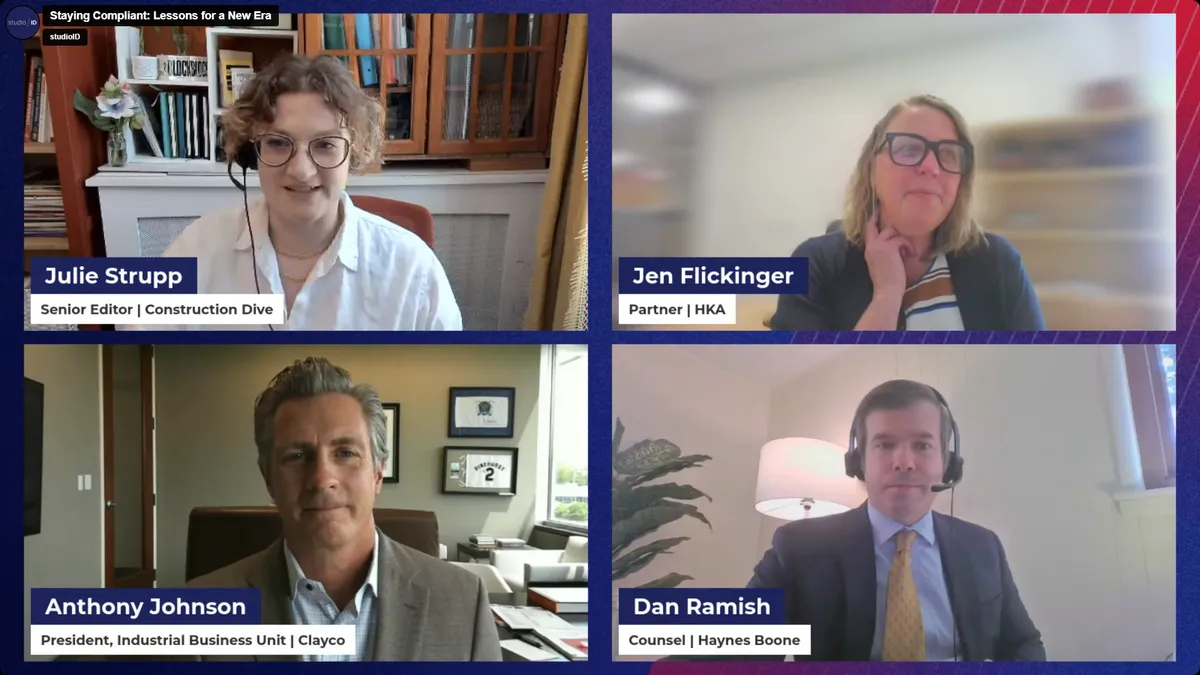Communicate with all project teams, read up on the details of your contract and plan thoroughly.
That was the bottom line from experts speaking at the second half of Construction Dive’s inaugural event: “How Builders Can Thrive Amid the U.S. Manufacturing Boom.”
That session, titled “Staying Compliant: Lessons for a New Era,” focused on how to navigate the many regulations that typically apply to large and complex manufacturing projects funded through the federal CHIPS and Science Act, the Infrastructure Investment and Jobs Act, Inflation Reduction Act and American Rescue plan.
“There really is a lot of detail you have to be careful about,” said Jennifer Flickinger, government contracts expert and partner with HKA, a global risk-management company.
A key place to start with compliance is knowing where the funding is coming from, said Daniel Ramish, counsel at law firm Haynes Boone. Compliance with direct federal funding can differ greatly from funding dispersed by an agency or state, which may have its own method for rolling out funds and different statutes builders must follow, Ramish said.
Knowing about those requirements early, experts said, is key to ensuring the project runs smoothly.
Davis-Bacon wage rules, for example, may require builders to pay workers and to keep records differently than they’re used to. Even though it’s possible to retroactively fix issues, it’s a lot of trouble.
“There’s a risk you may have to comply after the fact,” Ramish said. “So, much better to get it done on the front end.”
Similarly for Build America, Buy America domestic sourcing provisions, contractors may need to budget and plan differently than they’re used to in order to source certain materials correctly.
Getting on the same page
Anthony Johnson, president of Clayco’s industrial business unit, said his firm has often worked with clients that have the government affairs side of things separate from construction and engineering. As a result, teams may not be on the same page when it comes to what incentives from the federal government a project seeks, and the strings attached to them.
“Generally, how those incentives flow is not something that the engineering and construction unit within our customer’s organization needs to get all that concerned with,” Johnson said. “And so they generally and traditionally have not necessarily been talking about those incentives that the company or the end-user is pursuing.”
That’s starting to change, he said, as stakeholders increasingly take the time to ensure they know what incentives clients seek and what stipulations are attached.
In a real-world example, Johnson said an early project discussion led to the discovery it would have to comply with Davis-Bacon, which the team did not initially expect.
“Thankfully, we had kind of opened the door early on and had the client talking about it and it rose to the surface, but you could easily have seen a scenario where everyone just plowed ahead,” Johnson said.













